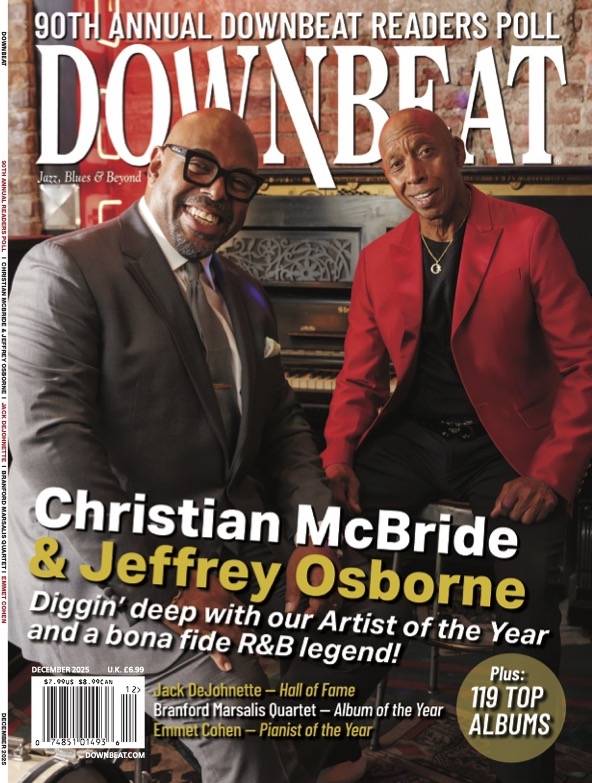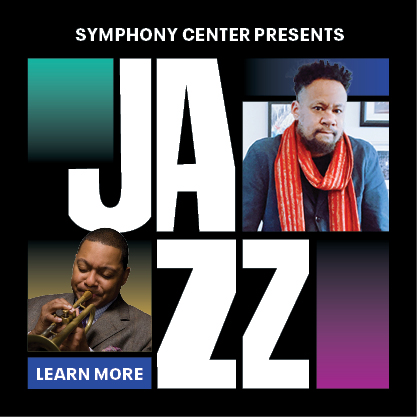Oct 28, 2025 10:47 AM
In Memoriam: Jack DeJohnette, 1942–2025
Jack DeJohnette, a bold and resourceful drummer and NEA Jazz Master who forged a unique vocabulary on the kit over his…
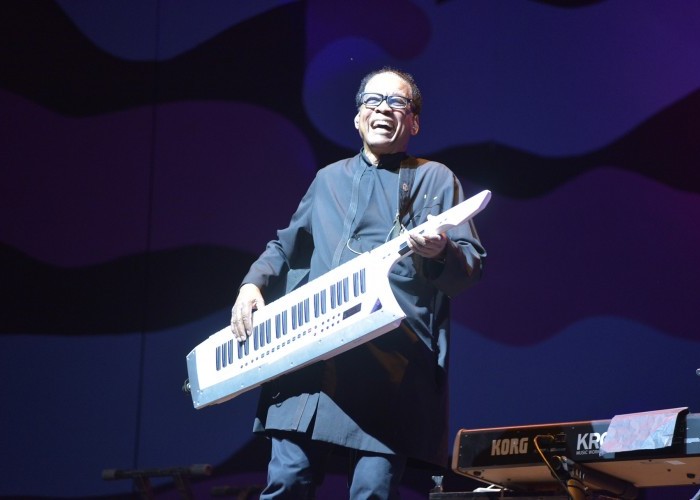
Hancock has a new project on the horizon but says he will not put it out until he’s ready.
(Photo: Mars Breslow)On April 12 of this year, Herbie Hancock turned 84. How many people do you know in their 80s who are still working full time — and a lot more effectively than some candidates in this year’s U.S. presidential election?
Hancock, though not the President of the United States, is certainly no ordinary octogenarian. He celebrated his recent birthday in Las Vegas. Perhaps he got a little gambling in, but Hancock was actually performing as part of an 18-show American tour, before flying halfway around the world to Tangier, Morocco, to fulfill his duties as UNESCO Goodwill Ambassador and concert host of the 13th International Jazz Day, serving in his role as the titular head of the Herbie Hancock Institute of Jazz.
Back home in Los Angeles, Hancock likes to take it a bit more easy, playing semi-regularly at his favorite local haunts, the Hollywood Bowl and Walt Disney Concert Hall. He returns to the Bowl in August for a 50th anniversary reunion of his Headhunters band with Bennie Maupin, Harvey Mason and Bill Summers. Marcus Miller sits in with the group, playing bass in place of the late Paul Jackson.
Hancock remains as active and vital as he has ever been to the current zeitgeist of jazz.
“I am honored to be selected as the 2024 DownBeat Critics Poll jazz keyboard winner,” said Hancock, in a statement to DownBeat. “I am truly grateful for all the appreciation and support that the fans, critics and DownBeat have shown me over the years.”
It’s the fourth win in five years for Hancock in that category, but it’s only his ninth honor for keyboards in the 61 years since his name first appeared in the 1963 Critics Poll in the subcategory of “Talent Deserving Wider Recognition,” the precursor to DB’s “Rising Star” categories. By 1966, he had moved from TDWR to “Established Talent,” placing in the middle of the pack along with Jaki Byard, Erroll Garner and Andrew Hill, yet far behind Oscar Peterson, Bill Evans and Earl Hines, who won the piano category by a landslide.
Two years later, Hancock was all alone at the top of the Critics Poll for piano, where he would stay for the next three years. But then, he followed his mentor Miles Davis into the unpredictable currents of fusion, drifting into a riptide that pulled Hancock off the DownBeat charts, vanishing completely à la Atlantis from the Critics Poll in 1972 and 1973. He would resurface in 1974 within the brand-new categories of synthesizer and electric piano.
DownBeat’s publisher at the time, Chuck Suber, curtly announced in his regular column: “Herbie Hancock has turned to syn(thesizer) and has been banned from piano.” And even there, he found himself in fifth place, behind winner Jan Hammer, Paul Bley (what?), Sun Ra and Joe Zawinul.
All that seems absurd considering that just a year prior, Hancock made an album that would cement his status as one of the greatest jazz keyboardists of all time. Head Hunters (Columbia, 1963) sent shockwaves throughout the jazz world that reverberate to this day. Hancock had already incorporated electronic keyboard into his own albums, starting with Fat Albert Rotunda (Warner Bros./Seven Arts, 1969), from which came Hancock’s beloved tune “Tell Me A Bedtime Story.” He followed with three profound, experimental albums with his Mwandishi sextet. But Head Hunters demonstrated that jazz could indeed morph into new forms yet still retain that elusive essence unique to jazz. He proved that serious jazz could be unmitigated fun, and undeniably funky.
The general public went nuts for it, making Head Hunters the first jazz album to go platinum. But jazz-loving fans also embraced Hancock’s hot new thing, voting him the top synthesizer player in the 1974 Readers Poll. The critics, however, were not as impressed, elevating Joe Zawinul or Corea over Hancock in every subsequent Critics Poll for a very long time. Granted, Hancock was always hovering near the top, but never breaking through until — incomprehensibly — 1995, more than two decades after the release of Head Hunters.
It wasn’t for lack of new material. Take, for instance, 1974’s Thrust (Columbia), which bolstered the trajectory of its predecessor, loading two more tunes into the Herbie canon: “Actual Proof” and “Butterfly.” That same year also saw the Japanese release of Dedication (CBS/Sony), a solo album Hancock recorded while on tour in Japan, showcasing his utter mastery over both acoustic piano and electronic sound creation.
Hancock moved further into ’70s funk with Man-Child (Columbia, 1975), an album that could have been produced by Stevie Wonder (who makes a cameo on harmonica). Secrets (Columbia, 1976) sported a more mellow, groovy vibe, and a reggae-influenced version of a re-spelled “Cantelope Island.” For Sunlight (Columbia, 1977), Hancock added another instrument to his arsenal: a Sennheiser VSM-201 vocoder, entertaining the idea of Hancock as jazz musician-turned-singing star in the mold of George Benson or, before him, Nat Cole.
The late ’70s into the early ’80s saw Hancock strut into the disco craze with four more albums for Columbia: Feets, Don’t Fail Me Now (1979), Monster (1980), Mr. Hands (1980) and Magic Windows (1981). Also in 1981, he would refresh his acoustic jazz roots, recording a trio record with his former Miles Davis bandmates Ron Carter and Tony Williams, adding to a second session a promising young trumpeter named Wynton Marsalis, who came to view Hancock’s extended foray into popular music as a threat to the survival of jazz. But that is another story.
Hancock forged on with Lite Me Up (Columbia, 1982), an entertaining blend of Earth Wind & Fire, Steely Dan and early Michael Jackson. And then, Hancock would electrify the music world again with the release of Future Shock (Columbia, 1983) and the hit single from that album, “Rockit,” through which the underground music of hip-hop was mainlined to the MTV crowd, earning Hancock a Grammy for Best R&B Instrumental Performance.
Not that the jazz critics cared. Head Hunters, of course, was a critical as well as commercial hit. Nat Freedland, in reviewing the album for Billboard, wrote: “Hancock is specifically trying to take his formidable jazz keyboard techniques into music that combines the appeal of soul at its funkiest and the flights of free-form playing.” And Chuck Mitchell in DownBeat gave the album five stars, writing: “Herbie Hancock has managed to bring his sound around to a more fundamental, easily communicable form without making compromises in the areas of energy, intensity and musical variety. He has both the skills and the creative vision to escape the trap of repetition that the deceptively simple approach will now present to him.”
But Hancock’s continued courting of Soul Train danceaholics had the prolonged effect of alienating more than a few jazz aficionados, evidenced by the fact that all or most of these later albums were either largely ignored or panned outright by jazz writers. In The Rolling Stone Jazz Record Guide, author John Swenson asserts: “Feets, Lite, Magic and Monster have virtually no interest from a jazz perspective, overladen as they are with vocoders and other gimmicktry.” This prevailing attitude might explain Hancock’s dry spell of Critics Poll wins during this era.
A dozen years after Future Shock, during which Hancock was relatively quiet on the recording front, making only three albums during that span (the last three he would do for Columbia), he released Dis Is da Drum (Mercury, 1994), another crossover album that reflected the acid-jazz/electronic music scene of the ’90s. Drum received less than stellar marks; Rolling Stone said of the album, “Where Hancock was once a master of the danceable pulse, his latest rhythms feel bloodless.”
Yet Hancock at this point had rehabilitated his jazz career, having scored and acted in the film Round Midnight (winning an Oscar in 1987 for Best Original Score), recorded and toured with Ron Carter, Tony Williams and Wayne Shorter along with Wallace Roney in a tribute to Miles Davis, who died in 1991, and started a new straightahead band, Parallel Realities, that featured Jack DeJohnette, Dave Holland and Pat Metheny. All that seemed to convince enough writers to finally award Hancock that very first Critics Poll win for keyboards in 1995.
The second half of the ’90s would ensconce Hancock in his rightful role as one of the most important jazz minds to have lived. His run of albums for Verve: The New Standard (1996), 1 + 1 (1997) and Gershwin’s World (1998) were commercial and critical successes, and the critics responded with another poll win for Hancock in 1996 for keyboards and an overdue return to the piano category in 1997. In 1999, they voted Gershwin’s World Album of the Year, and they crowned Hancock as the Critics Poll Artist of the Year.
In 2005, DownBeat’s readers voted Hancock into the Hall of Fame, and three years later, he was again voted Artist of the Year in the 2008 Critics Poll, bookending the Grammys he received that same year, as River: The Joni Letters (Verve, 2007) won for Best Contemporary Jazz Album and also Album of the Year, in a shocking upset over Kanye West, Amy Winehouse, Vince Gill and Foo Fighters. It took nearly half a century, but finally the critics and the audiences were all on the same page in admiration of their chief Headhunter.
It’s a perch from which he has yet to climb down. Despite not having made an album in nearly 15 years, Hancock has been atop the Critics Poll for keyboards five more times during that span, and he has been the Readers Poll favorite for nearly every one of those years.
There is a new project in the works for Hancock, as he has been collaborating with a new generation of crossover jazz artists: Terrace Martin, Flying Lotus, Kamasi Washington and Thundercat, with potential appearances by hip-hop artists Kendrick Lamar, Common and Snoop Dog. One could speculate that their successes at blending jazz with funk, pop and hip-hop are built on the shoulders of their prime collaborator, who has spent his lifetime trying to do just that. Whatever they ultimately produce together will be the full-circling of that legacy.
But Hancock has indicated he’s in no rush to put anything out before it is ready. So, as we await the next chapter in his storied career, Herbie Hancock will do what most 80-somethings do all the time: whatever the hell he wants. Fans and critics alike know he’s earned it. DB
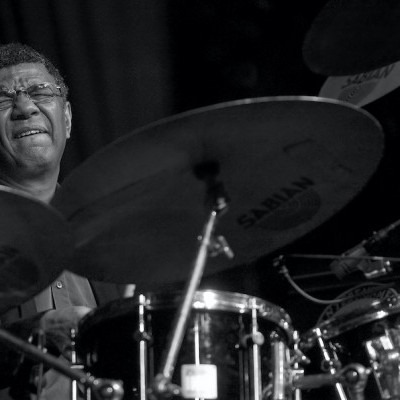
Jack DeJohnette boasted a musical resume that was as long as it was fearsome.
Oct 28, 2025 10:47 AM
Jack DeJohnette, a bold and resourceful drummer and NEA Jazz Master who forged a unique vocabulary on the kit over his…
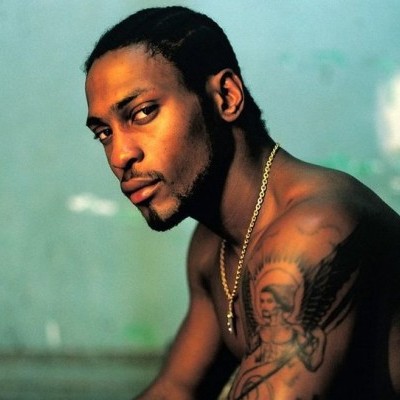
D’Angelo achieved commercial and critical success experimenting with a fusion of jazz, funk, soul, R&B and hip-hop.
Oct 14, 2025 1:47 PM
D’Angelo, a Grammy-winning R&B and neo-soul singer, guitarist and pianist who exerted a profound influence on 21st…
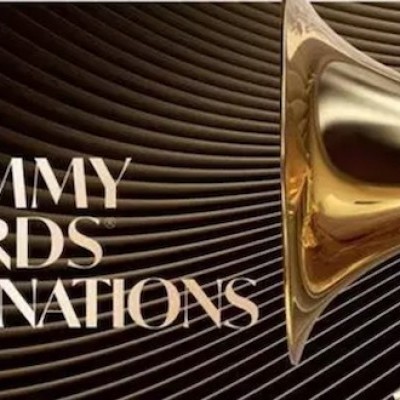
To see the complete list of nominations for the 2026 Grammy Awards, go to grammy.com.
Nov 11, 2025 12:35 PM
The nominations for the 2026 Grammy Awards are in, with plenty to smile about for the worlds of jazz, blues and beyond.…
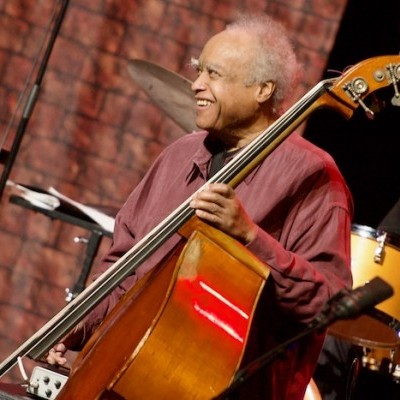
Drummond was cherished by generations of mainstream jazz listeners and bandleaders for his authoritative tonal presence, a defining quality of his style most apparent when he played his instrument unamplified.
Nov 4, 2025 11:39 AM
Ray Drummond, a first-call bassist who appeared on hundreds of albums as a sideman for some of the top names in jazz…
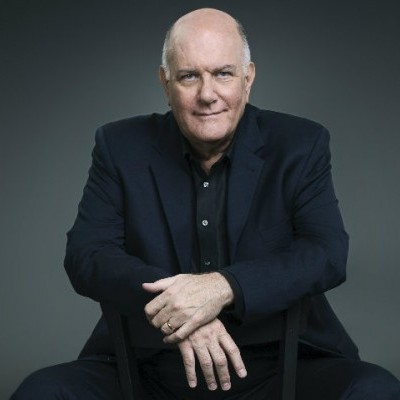
Jim McNeely’s singular body of work had a profound and lasting influence on many of today’s top jazz composers in the U.S. and in Europe.
Oct 7, 2025 3:40 PM
Pianist Jim McNeely, one of the most distinguished large ensemble jazz composers of his generation, died Sept. 26 at…

